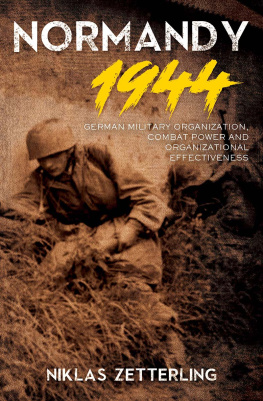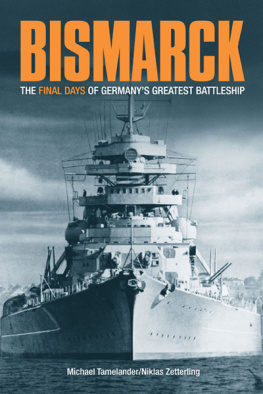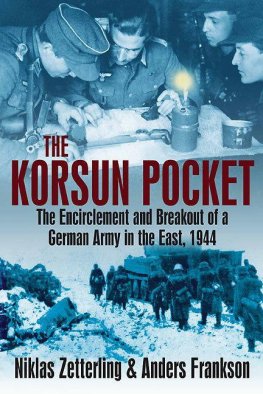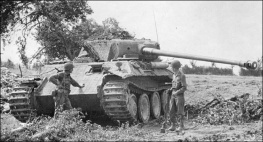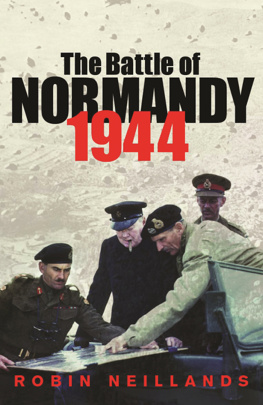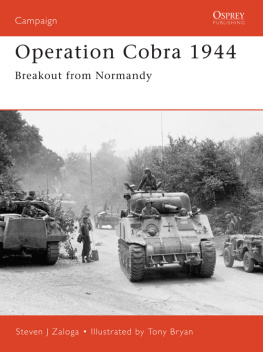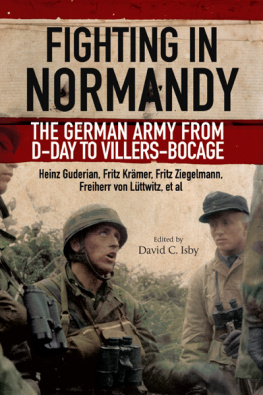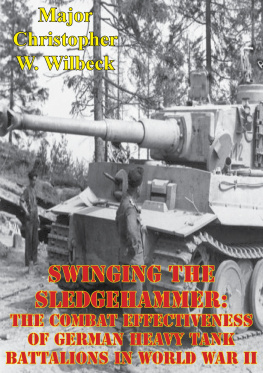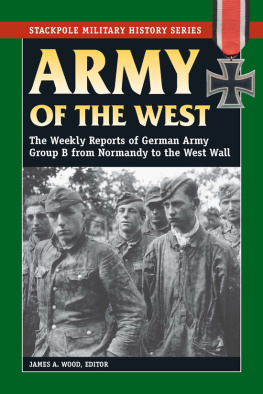Pagebreaks of the print version

Normandy 1944
Normandy 1944
German Military Organization, Combat Power and Organizational Effectiveness
Niklas Zetterling
First edition published by J.J. Fedorowicz Publishing in 2010
This fully revised edition published in 2019
Published in the United States of America and Great Britain in 2019 by
CASEMATE PUBLISHERS
1950 Lawrence Road, Havertown, PA 19083, USA
and
The Old Music Hall, 106108 Cowley Road, Oxford OX4 1JE, UK
Copyright 2019 Niklas Zetterling
Hardcover Edition: ISBN 978-1-61200-816-5
Digital Edition: ISBN 978-1-61200-817-2
Kindle ISBN 978-1-61200-817-2
A CIP record for this book is available from the British Library
All rights reserved. No part of this book may be reproduced or transmitted in any form or by any means, electronic or mechanical including photocopying, recording or by any information storage and retrieval system, without permission from the publisher in writing.
For a complete list of Casemate titles, please contact:
CASEMATE PUBLISHERS (US)
Telephone (610) 853-9131
Fax (610) 853-9146
Email:
www.casematepublishers.com
CASEMATE PUBLISHERS (UK)
Telephone (01865) 241249
Email:
www.casematepublishers.co.uk
Front cover: Fallschirmjger in Normandy, 1944. (Bundesarchiv, Bild 101I-584-2160-12)
Introduction
The battle in Normandy during the summer 1944 is among the most well-known events in history. Innumerable books and other publications have been produced on this subject. Given this background it is natural to assume that there is little to add to our knowledge of this battle. A closer scrutiny of the available literature, however, reveals several flaws.
One item that has been lacking is an order of battle for the German forces involved. Most books seem to have a fairly clear picture about the whereabouts of the German divisions. But when it comes to non-divisional combat units, information is much scarcer. This is partly explained by the shortage of suitable order of battle charts in the German documents that have survived. Thus, the researcher is forced to proceed along a much more strenuous path, to scan all available documents for information on unit employment and compile what is found. Also, such a laborious work will uncover more information about the condition of the units that fought in Normandy.
Another imperfection in available publications is the way German casualties are treated. Since no comprehensive compilation has been found among the documents for the units and staffs that were involved in the battle this is understandable. There are, however, ways to make a fairly accurate estimate of German casualties. Given this problem it is hardly surprising that the condition of the German units after the battle is often inaccurately described.
Many myths about how German units were organized are also prolific. This is hardly surprising, since there often existed several different organizations for a given type of unit. Further compounding this difficulty is the fact that German units quite often did not adhere to the proscribed organization. Nevertheless, some of the myths are not excusable despite these circumstances.
These circumstances indicate a need for more research on the German units that fought in Normandy. Hopefully, this book will provide some of the information that can redress the imperfections described above. It is, however, a vast topic and much research remain to be done. Perhaps this work can provide some assistance to such efforts.
One of the protracted discussions of World War II is the relative combat efficiency of the German forces compared to British and US units. Occasionally, the argument that democracies produce better soldiers is encountered. It would certainly be comforting if democracies, almost by default, produce better soldiers than obnoxious regimes like Nazi Germany. Personally I believe that democracies usually do produce better soldiers than dictatorships, but I do not believe that there are no exceptions to this. Rather, it could be dangerous to assume that there are no exceptions, since that could cause complacency. The democracy is too valuable to be jeopardized by such simplifications. The issue of German combat efficiency is discussed further in the book.

